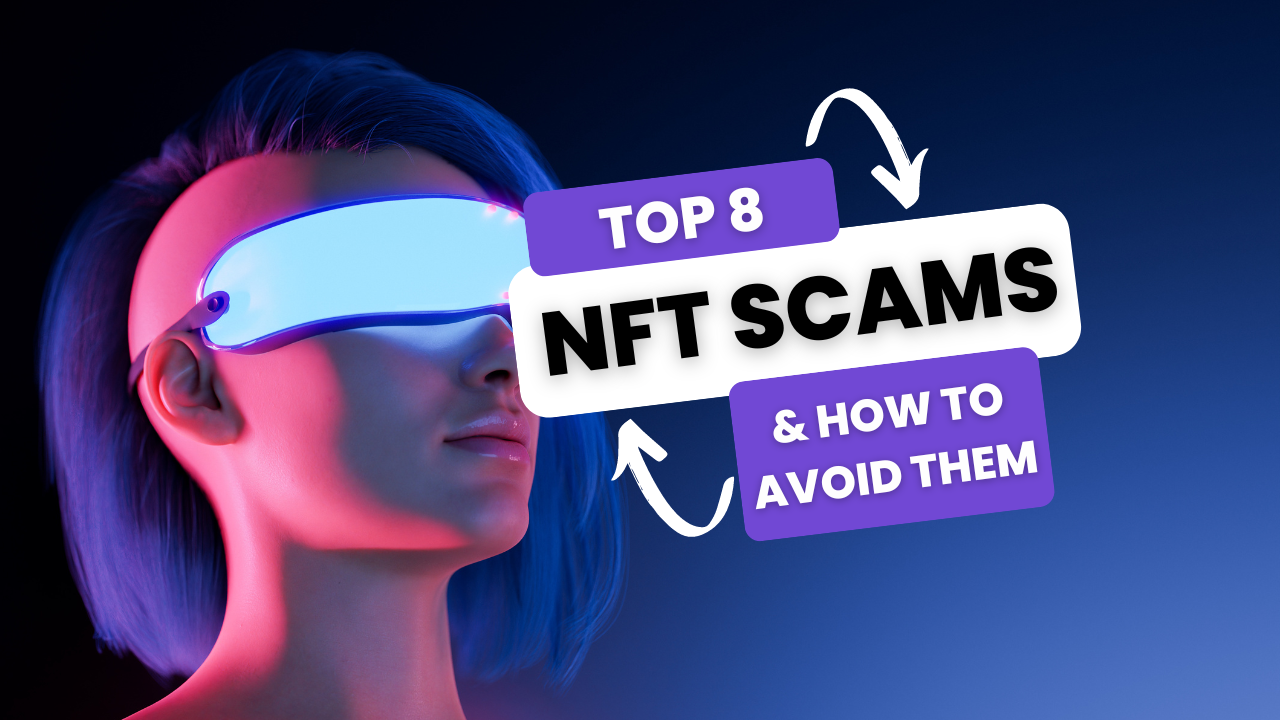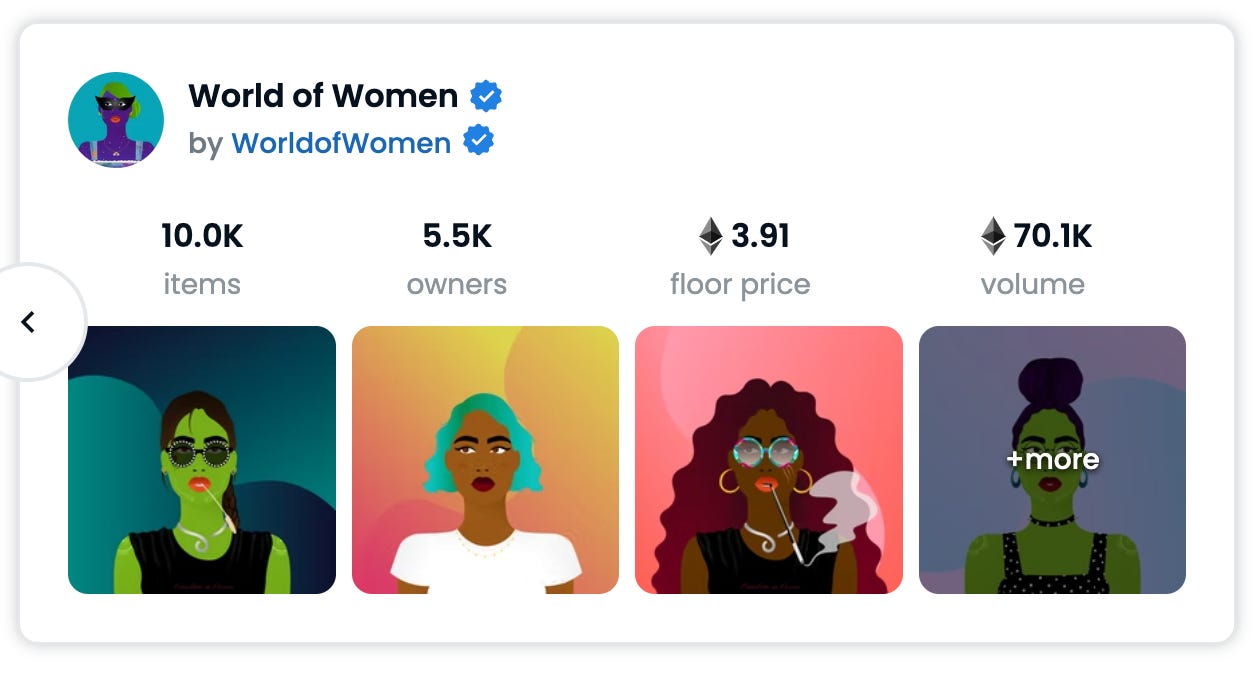The Top 8 NFT scams and how to avoid them
Nov 01, 2022
Australians alone lost a record $2 BILLION to scams last year 😳

*ACCC Targeting Scams report 2021
Cryptocurrencies and NFTs tend to see the headlines - but they’re not the only ones to blame.
Here’s the TL;DR (too long didn’t read)
NFTs unto themselves are not a scam, but unfortunately, they still play victim to scams.
The top 8 NFT scams are:
-
Fake websites
-
Fake Offers
-
NFT giveaways/airdrop scams
-
Social Media impersonators
-
Fake NFT projects
-
Counterfeit or plagiarized NFTs
-
Bidding scams
-
The influencer trick
And if you want to jump to the tactics on how to avoid 8 of the most common NFT scams scroll down to the bottom; but first…
The history of scams
Where there is money to be made, you can guarantee there is someone out there wanting to exploit it. Just the other day, we heard a group of people posing as tradies on Facebook Marketplace, taking a $5,000 cash deposit for a “job” only to run away, and never heard of again.
Scams are not an uncommon practice.
An old proverb cautions that "a fool and his money are soon parted," and con artists justify carrying out that parting with one of Murphy's Laws:
“It is morally wrong to allow suckers to keep their money.”
Scams have (sadly) been around for centuries; some of the biggest scams in modern history have seen the selling of the Brooklyn Bridge, and perhaps most famously, Charles Ponzi, who used to promise outrageous short-term profits of 50%-100% when he was, in fact, just shuffling money from one person to the next while keeping most for himself, pocketing a whopping $15 million in the process.
When the internet came to the masses, you better believe scammers were waiting to jump on the vulnerable.
One internet scam includes phishing emails, where an email acts as the “real” company only for a user to click on a link to a website that looks like the actual site to entice you to input sensitive information.
The primary purpose of this type of scam is usually to gain credit card details or to capture login and password information.
In fact, according to data from the FTC, in 2020, over 2.8 million people reported acts of fraud with losses accumulating to more than $5.8 billion!
Scams happen, and have unfortunately been around for centuries… but,
Let’s talk NFTs:
There is no denying that NFTs are here to stay. With Meta announcing that Instagram is testing NFTs with select creators and will soon be accessible to all 2.8 billion users it’s safe to say they will play a massive part in our future.
Simply put, NFTs (Non-Fungible Tokens) are digital items with proof of ownership attached.
These digital “tokens” or items can be anything from art, memberships, music, or contracts. They can even be digital representations of items in the physical world, like handbags, watches or even wine!
Being able to authenticate these items can prove crucial. According to Statista, sales losses from counterfeit handbag’s worldwide in 2020 were 1.6 BILLION!
That’s one massive handbag scam!
As we transition into the world of Web3, NFTs are no exception to Murphy’s Law. Unfortunately, scams are part and parcel of new technologies; as we are learning how to use them, people abuse them! So it’s important to know what to look out for as we navigate this together.
It’s estimated that NFT holders are losing millions daily to scams, but that shouldn’t deter you from wanting to get involved. That’s like saying, “I never want to pick up the phone again because it could be a scammer”. You’re still going to pick up the phone if someone calls; you’re just now aware of potential scams out there, so you are rightfully so, more cautious. And this is precisely how we should behave in Web 3.
That’s like saying I never want to pick up the phone again because it could be a scammer.
Here are 8 popular NFT scams to be aware of:
1. Fake Websites:
This is where a fake website will pose as the actual NFT projects website. If they’ve gone the extra mile they will often look and behave identically to each other.
Once you connect your wallet to the site and sign any contract it will compromise all of the wallet’s information (with your NFTs and Crypto as collateral).
How to avoid:
It can be crucial always to verify the URL (website address) you’re interacting with. For this reason, always be safe by clicking on links from the project’s social media accounts or their Discord server.
Typing the project’s name into Google isn’t always the safest bet as scammers can go the extra mile and pay for Google ads to rank #1 above the real site.
2. Fake offers
This NFT scam is created by a phishing email or link inside your DMs. Similar to the scam above. The message will suggest a “surprise mint” or “limited edition mint”.
The link in the message or email will take you to a fake website, it will then use spyware to record your information and then steal the NFTs from your wallet.
How to avoid:
If you receive a message or email from a company, good practice is to always verify the URL or sender. It’s rare you will be personally reached out to in your DMs by NFT projects, if so, it’s highly unlikely they would drop a URL address.
3. NFT giveaways/airdrop scams
If it sounds too good to be true… it probably is. This scam is where someone will offer a free NFT as a giveaway on their website. They will probably promise a free NFT if you share their message and connect your wallet to their website. By connecting your wallet, you are allowing the site to interact with you. Before minting a free NFT ensure these projects are legitimate by checking out the social profiles of the founders, the project and…

If you’re entirely unsure, you could use a different or secondary wallet to interact with the site that has nothing inside. Once you have minted the free NFT you can always transfer it to your primary hot (online) wallet or cold (offline) wallet from there.
How to avoid:
Whenever you connect your wallet to a dApp (decentralised application) first, double-check the URL, second, before you press connect, check what the application will be able to read.
In the above photo, you can see that the dApp can “see address, account balance, activity and suggest transactions to approve”. Nothing more. Nothing less.
4. Social media impersonators
This is where scammers create fake accounts to look like the real ones. Simple, yet can be effective.
Here is what Vitalik Buterin (the founder of Ethereum) has to say about it…

Scammers will send you to fake websites or even ask you to send them $ETH in exchange for bigger returns.
How to avoid:
Again if it’s too good to be true… it absolutely is with this one. Trust your gut and be sure to verify the messengers handle. This happens on Instagram and all other social media platforms too.
5. Fake NFT projects & Scams
This scam is the influencer of scams and will normally get the most media attention. This is because these scams have the largest dollar wins for the scammers.
Because we’re dealing with the online space, founders can remain anonymous (un-doxxed). How this scam works is projects are hyped up through the power of paid ads and influencer marketing which in turn creates a fast sell out, (or at least a lot of NFTs minted).
The founders then simply transfer all of the funds generated into their wallets never to be heard of again. This happened recently with Frosties NFT, where the founders pocketed $1.1 million. However, the founders were caught and were subsequently arrested.
How to avoid:
Legitimate projects with undoxxed founders are few and far between nowadays, but first ensure the founders are doxxed (verified) by checking out their social media profiles. They are who they say they are.
Secondly, take a breath…
Is this a project you really believe in or are you being swept up in the hype machine? Trust your gut and ensure it’s a project you trust.
6. Counterfeit or plagiarised NFT’s
Because NFTs on face value can simply look like a Jpeg it’s simple for a scammer to take a screen shot and mint the same picture as a new NFT. Although they look the same, it’s not the real one.
Can you spot the fake wine?

Tough, right!
When it comes to NFTs it’s a little easier than popping the cork and tasting the wine (although perhaps not as fun!).
It has to do with the metadata behind the NFT. Who was the original creator? If it’s a part of a collection, are you able to verify the others in the collection too? This is what makes the NFT unique, it’s the specific code attached to it.
How to avoid:
When you purchase an NFT on the secondary market (like OpenSea), ensure you are buying it from the official project page. On Opensea it has the “blue tick” verified icon next to a legitimate projects name. Like a fine bottle of vintage wine, don’t rush it, enjoy it.

7. Bidding scams
If you have bought an NFT and decide to sell you it on the secondary market, it’s essential to check that the buyer is purchasing it with the correct cryptocurrency. What scammers can do is once a seller has accepted the highest bid, the buyer may switch out the cryptocurrency for another. This could result in you selling your NFT for a 99% discount 😯
How to avoid:
When you sell an NFT be sure to check that it is being purchased with the currency you want to be transferred. $ETH15 is different to $15.
8. The Influencer Trick
Because everything happens onchain and is visible to the public, influencers wallets can easily be stalked and found.
The way this scam works is a project will “airdrop” (send for free) an NFT to an influencer.
They will then promote on social media for example that “Paris Hilton owns this NFT and why you should to”. Although, yes, the NFT is in her wallet, she was only sent it and she never wanted to buy it.
If a project is promoting the fact an influencer has bought their NFT make sure the influencer is promoting it too
How to avoid:
Make sure the influencer in mention has specifically spoken about the project. And remember, just because a celebrity owns an NFT it doesn’t have to mean you should too.
Where there is money to be scammed, the scammers are there waiting.
As we enter the world of Web3, the more we can understand how we might be scammed, the better equipped we’ll be to avoid them from happening.
Knowledge is power.
Is there a specific scam you would like more detail on? Comment below.
If you enjoyed this article, be sure to share it with your friends to help protect them too!
Until next time,
SHC x

